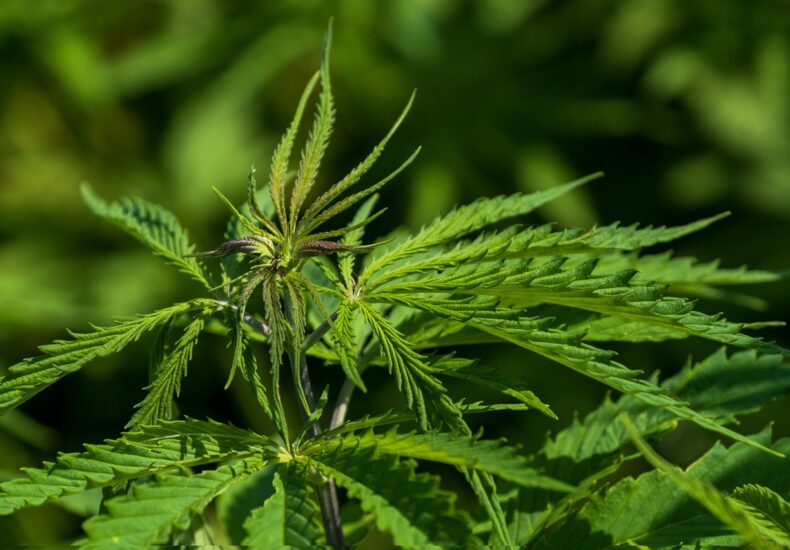
From Raw Plant to Powerful Medicine: THCA Flower’s Journey
The transformation of raw plant material into a potent medicinal product is a fascinating process. One such journey is that of the THCA flower, a component of the cannabis plant that has gained attention for its potential therapeutic benefits. This article explores the path from cultivation to consumption, highlighting the science, benefits, and challenges associated with health benefits of THCa.
The Science Behind THCA
THCA, or tetrahydrocannabinolic acid, is a non-psychoactive cannabinoid found in raw cannabis. Unlike THC, which is known for its psychoactive effects, THCA does not produce a high. This makes it an attractive option for those seeking the medicinal benefits of cannabis without the mind-altering effects.
THCA is the precursor to THC. When cannabis is heated through smoking, vaping, or cooking, THCA undergoes decarboxylation, a chemical reaction that converts it into THC. This process is crucial for those looking to experience the psychoactive effects of cannabis. However, for medicinal purposes, THCA itself offers a range of potential benefits.
Potential Health Benefits
- Anti-inflammatory properties: THCA has shown promise in reducing inflammation, which can be beneficial for conditions like arthritis and lupus.
- Neuroprotective effects: Research suggests that THCA may help protect brain cells, offering potential benefits for neurodegenerative diseases such as Alzheimer’s.
- Anti-emetic properties: THCA may help reduce nausea and vomiting, making it a potential option for patients undergoing chemotherapy.
The Cultivation of THCA-Rich Cannabis
The journey of THCA begins with the cultivation of cannabis plants. Selecting the right strain is crucial, as different strains have varying levels of THCA. Growers often choose strains known for their high THCA content to maximize the potential yield.
Environmental factors play a significant role in the cultivation process. Temperature, humidity, and light exposure all impact the growth and development of the plant. Organic farming practices are often employed to ensure the purity and quality of the final product.
Harvesting and Processing
Once the plants reach maturity, they are harvested and processed. The timing of the harvest is critical, as it affects the cannabinoid profile of the plant. After harvesting, the plants are dried and cured to preserve their chemical integrity.
Processing methods vary, but the goal is to extract the THCA while maintaining its stability. This can involve techniques such as cold pressing or solventless extraction, which help retain the beneficial properties of THCA without introducing harmful chemicals.
From Extraction to Consumption
After extraction, THCA can be consumed in various forms. Raw cannabis juice, tinctures, and capsules are popular options for those seeking the benefits of THCA without the psychoactive effects of THC.
Raw cannabis juice is made by blending fresh cannabis leaves and flowers. This method preserves the THCA content and allows for easy consumption. Tinctures and capsules offer a more concentrated form of THCA, providing a convenient option for those who prefer precise dosing.
Case Studies and Research
Several studies have explored the potential benefits of THCA. A study published in the British Journal of Pharmacology found that THCA exhibited anti-inflammatory properties in animal models. Another study in the Journal of Neuroimmune Pharmacology highlighted its neuroprotective effects, suggesting potential applications in treating neurodegenerative diseases.
Patient testimonials further support these findings. Individuals with chronic pain and inflammation have reported significant improvements in their symptoms after incorporating THCA into their treatment regimen.
Challenges and Considerations
Despite its potential benefits, the use of THCA is not without challenges. Legal restrictions on cannabis in many regions limit access to THCA-rich products. Additionally, the lack of standardized dosing guidelines can make it difficult for patients to determine the appropriate amount for their needs.
Quality control is another concern. The cannabis industry is still largely unregulated, leading to variations in product quality and potency. Consumers must be diligent in selecting reputable sources to ensure they receive a safe and effective product.
Future Prospects
The future of THCA as a medicinal product looks promising. As research continues to uncover its potential benefits, there is hope for increased acceptance and availability. Advances in cultivation and extraction techniques may also lead to more efficient production methods, making THCA more accessible to those in need.
Conclusion
The journey of THCA from raw plant to powerful medicine is a testament to the potential of cannabis as a therapeutic agent. With its range of potential health benefits and non-psychoactive nature, THCA offers a unique option for those seeking alternative treatments. As research and regulations evolve, the future of THCA in the medical field holds great promise.
- Managing Your Canine’s Joint inflammation with CBD: An Animal Proprietor’s Overview
- Checking out the Conveniences of CBD Oil for Aging Dogs and Joint Inflammation Relief
- Brew Like a Pro: Understanding the Art of Making Perfect Mushroom Coffee
- ** The Influence of Gold IRA Charges on Your Financial Investment Strategy **.
- Tax Obligation Benefits of Purchasing Gold and Silver with Augusta